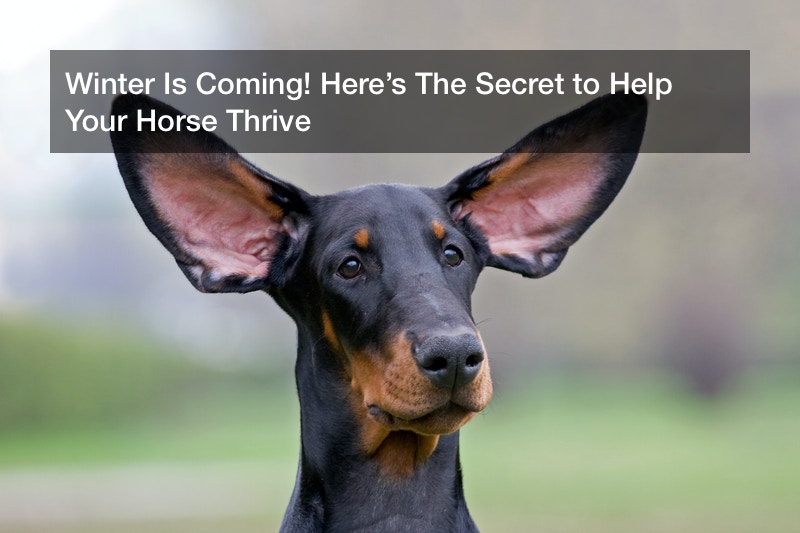
Each year in the United States, an estimated 7 million people ride horses. With such a statistic, it would only be prudent to ensure that our equine friends are always in fine fettle. During winter, it becomes essential to ready your horse for the first snowfall or cold snap. As a savvy horse owner, there are things that you need to know that will help your horse thrive during winter.
1.Horse Neck Cover
If you have always wondered about how to keep your horse shielded from the elements during winter, you can never go wrong with a horse neck cover. With a horse neck cover, you will have what it takes to confidently take your horse out in freezing rain, sleet, snow, and mud. Adding a horse neck cover to your horse’s wardrobe will go a long way in keeping them dry and warm no matter the weather condition.
2. Blanketing
Any horse will appreciate a blanket during winter. This is particularly helpful for horses that are old, sickly, clipped, or underweight. It is along the same lines that breed such as Arabians and Thoroughbreds are more likely to need a blanket as compared to hardier counterparts such as ponies that grow thick coats.
A blanket for a horse and shaggy coats may at times make weight loss go unnoticed. It is advisable that you run your hand on your horse’s ribs and back every so often to take note of any weight change. In case you are not sure if your horse needs a blanket, having one before winter starts knocking is among the best decisions you can ever make. Begin by allowing the horse to develop a natural winter coat as well as feeding him/her lots of hay. Monitor the horse’s general condition and weight. If you notice signs such as shivering and weight loss, a horse fleece blanket and perhaps more hay will come in handy.
The best blanket for horses is one that can withstand the severities of repeated turnout. The best horse blankets come with features such as high density on the outer shell as this makes the blanket difficult to rip. The denser the blanket’s, the warmer it will be but make sure that the horse is not sweating. Repair any torn blanket to avoid losing insulation value. Having additional leg straps and snaps is also advised as they are in most cases the first to break. Also, test old blankets to confirm that they still fit before winter and clean them thoroughly before packing them away after winter.
3.Feet
Truth be told, whether to pull or keep horseshoes is a question that robs a good number of horse owners their coveted sleep at night. If this sounds like you, the best person to help is your preferred farrier. In case your horse is simply doing occasional light duties or perhaps enjoying some time off during winter, feel free to remove the shoes if he/she has healthy feet. Unlike plain shoes, bare hoofs offer necessary traction and grip on a slippery surface such as snow.
For a horse that will be outdoors in the ice and snow with shoes on, traction studs are a good idea as they play a major role in boosting safety. Your farrier will enlighten you on stud hole drilling as well as the best studs to use. Therapeutic or corrective shoeing during winter should proceed until the cold season comes to an end. The same applies to competition horses that have to be fit at any given
time.
4.Teeth
Extracting maximum nutrition from horse feed is crucial during winter. Therefore, pre-winter is perfect timing to have teeth examined by an equine dentist or vet. Proper dental care is key for all horses. It is particularly important for old horses having problems such as teeth loss or malocclusion issues in the form of uneven or sharp teeth edges. Teeth examination should be top priority before winter rolls
in.
With these tips, you are now in the know about how to help your equine friend stay strong during the winter season. Try them out today, and there is no doubt that your horse will be forever grateful!
